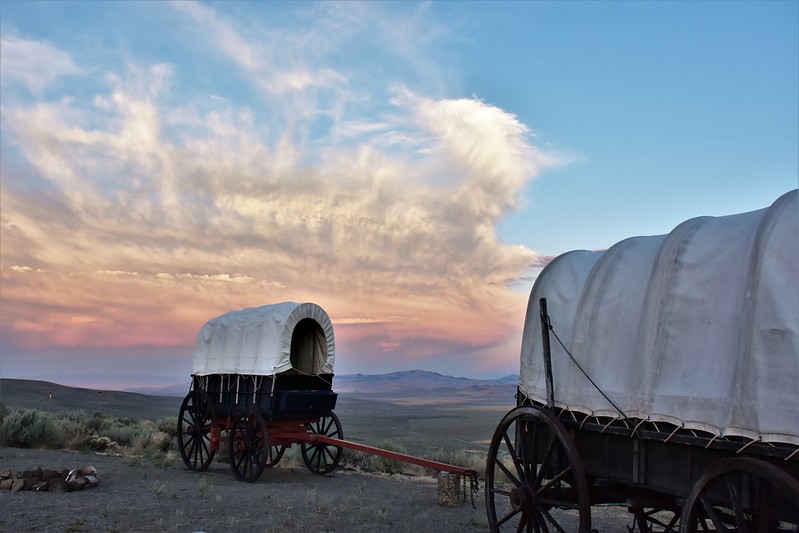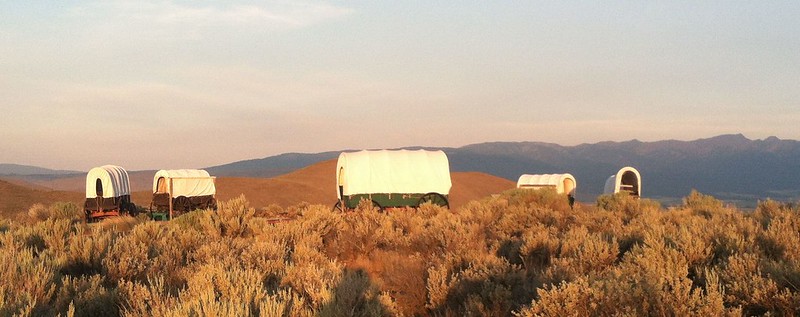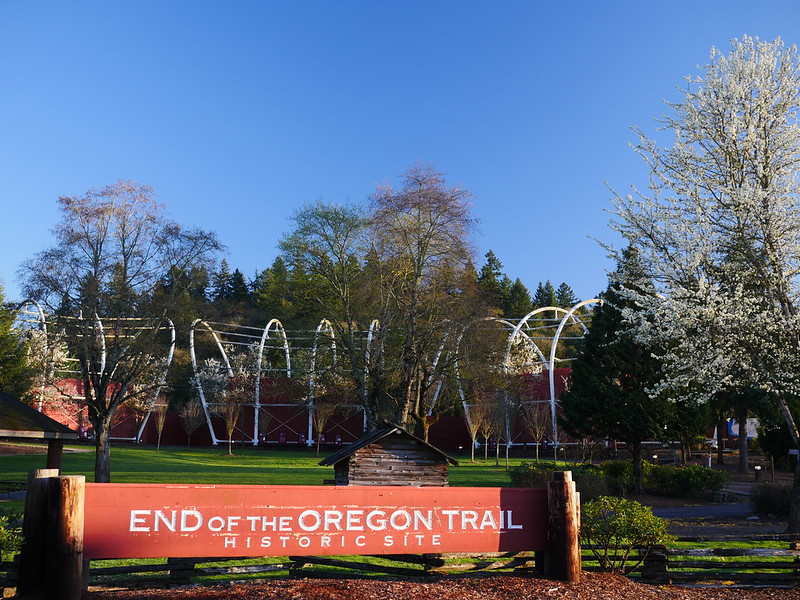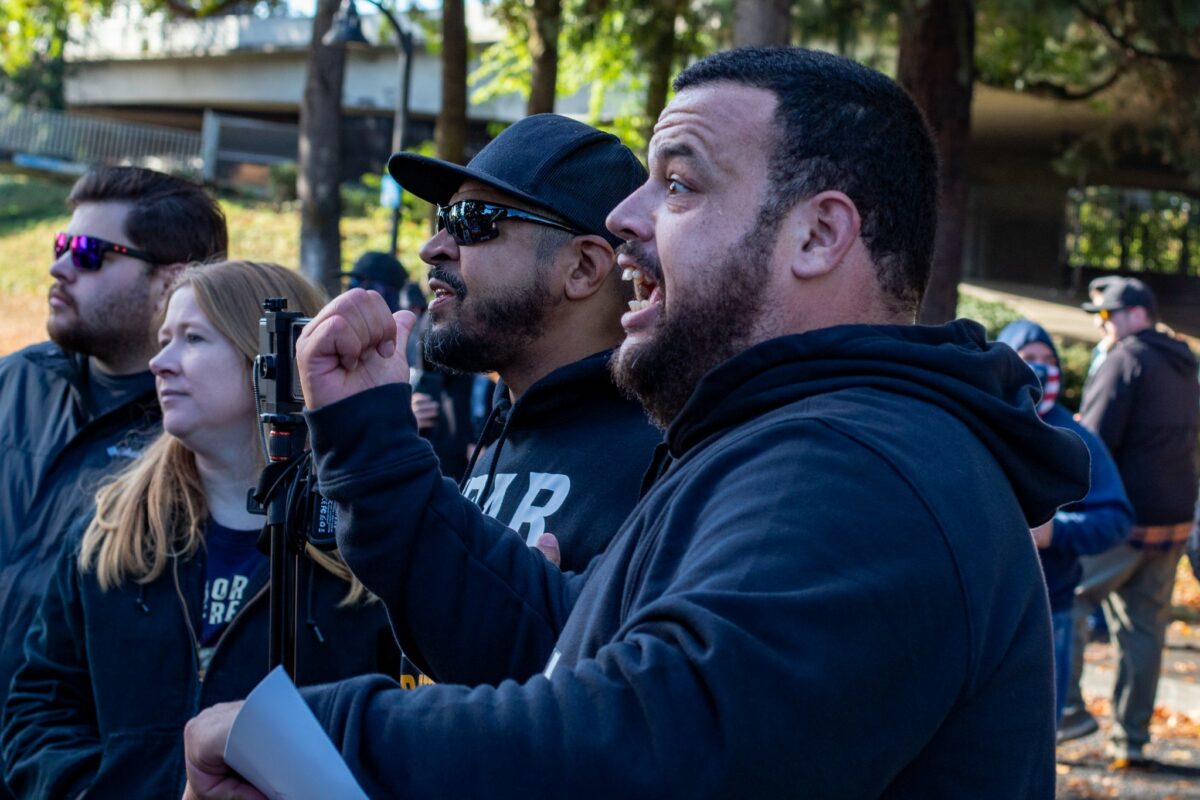PORTLAND–What small state resident doesn’t get a thrill when the national media flick their gaze towards one’s beloved home, even if ever so briefly? Oregon had a sweet run of such sugar rush coverage in the early 2000s, propelled by Portland’s excellent food scene, the cultural cachet of Portlandia, and, well, Portland’s excellent food scene. But then the coverage soured, particularly after long-running civil rights protests in the wake of George Floyd’s murder were distorted by right-wing media into a story of antifa run amok and a city aflame. More recently, after Walmart’s closure of its remaining stores within Portland city limits, Texas Governor Greg Abbott went back to that same smoldering well, landing one more sucker punch on our city and state by blaming, yes, Portland lawlessness for Walmart’s departure.
Yet Abbott’s early March sucker punch was not the latest instance of Oregon’s recent parlous run in the national media. No, that honor belongs to a pair of recent stories out from CNN and the New York Times that highlight a movement among some residents of eastern Oregon to break free of the state and join Idaho. As the Times reports, 11 Oregon counties have now passed resolutions requiring local government meetings to discuss secession; and in February, the Greater Idaho movement gained a measure of legitimacy as the Idaho legislature voted in favor of opening talks on the topic with Oregon (the Oregon state government has thus far declined the invitation to parlay).
The possibility of eastern Oregon counties joining Idaho remains a long shot: not only would the Idaho legislature need to consent, but so would the Oregon legislature and the U.S. Congress. Given Democrats’ strong hold on the state government, it seems unlikely that at least Oregon would ever consent to such a divorce, which would essentially strip the state down to a Pacific littoral.
Does this mean the movement should be dismissed as a stunt, an ostentatious exercise in letting off steam by disgruntled Oregonians? I believe that treating it as such would be a mistake — not simply because its chances of success are not technically impossible, but because many of the ideas motivating this movement are wrong-headed, misleading, and inflaming of the very political divisions the movement purports to seek to cure or at least ameliorate. Permitting illiberal notions of statehood and community to spread unchallenged — treating this as a fever that will simply burn itself out — is the same sort of head-in-the-sand mentality that has seen too many refuse to fully push back against a whole host of authoritarian, racist, and misogynistic ideas that now animate millions of right-wing voters across the land. What we’re seeing in Oregon is part of a larger national story.

At The Oregon Trail Interpretive Center in Baker City. July 28, 2017. Photo: Travel Baker County/Creative Commons
To their credit, both the New York Times and CNN articles on the Greater Idaho movement take a serious-minded approach. But in foregrounding the voices of those in the secessionist movement, the Times in particular excludes important context for the meaning and goals of the effort. As with the CNN piece, the Times presents analysis and interviews that suggest this push is due primarily to a rural-urban, liberal-conservative divide — as, above all else, a conflict of irreconcilable cultures, in which the western Oregon majority imposes its values on unwilling eastern Oregonians.
In doing so, such coverage adopts the basic premise of a primarily cultural divide that the secessionist movement itself claims as its motivation. The Greater Idaho website itself is rich with such vague cultural language, stating: “If the United States were governed as a single state, we wouldn’t have the opportunity for state governance to vary according to the culture of a local area. The purpose of having state lines is to allow this variance.” The current Idaho-Oregon state line does not reflect regional differences, in other words.
Yet, as you read further into the website, as well as the words of secession supporters in media coverage, the vague references to “cultural differences” between eastern and western Oregon end up hiding as much as they reveal. Rather, those favoring secession seem motivated by specific political issues, as well as a sense of powerlessness and resentment. On the website, a comparison of the advantages of being part of Idaho versus Oregon highlights a cross-section of contemporary right-wing concerns, highlighting Oregon’s actual or supposed support of: transgender rights (“males in girls’ sports leagues”); school “Critical Race Theory”; sanctuary, driver’s licenses, and “free health care” for “illegals”; “Taxpayer-Funded Abortions,” and “Fossil Fuels being phased out.”
The Times’s conversations with eastern Oregonians echo this theme of cultural issues that are better described as political conflicts. Of one such interviewee, the paper notes: “But even here, where she now runs a Christian camp amid the foothill pines overlooking the Grande Ronde Valley, she cannot help but notice how the values of western Oregon are held over the eastern part of the state by way of laws making guns less accessible and abortions more accessible.” Another interviewee “cited gun control and decriminalization of drugs as two major issues where the lesser-populated rural and vote-rich urban divide collide.” And another Greater Idaho supporter tells CNN that “the problems […] begin with rural Oregonians living fundamentally different lifestyles than people in the city of Portland. At the ballot box, due to the population strength of the cities, the rural region is outnumbered in every major statewide vote.”
Describing such differences — on abortion, gun control, and punishments for using drugs — as simply cultural or lifestyle conflicts, in which some people should presumably be free to live as they choose, is to present a misleading conception of the conflicts at play, and who stands to win or lose. Whether a woman can have an abortion; whether schoolchildren are protected from weapons of war being used for mass slaughter; whether a Black teenager should have his or her future ruined for smoking a joint: all are profoundly political questions involving the basic rights accorded citizens in our country, and the fight over which rights trump others.
By describing their wishes to secede in the more anodyne language of cultural differences, supporters of Greater Idaho are obscuring conflicts over basic rights, aiming for a generalized, libertarian proposition that everyone should be free to live true to their own beliefs. But as even a cursory look at say, abortion, reveals, it appears many in eastern Oregon are less concerned about their own relative rights around abortion, and much more concerned about whether they control other people’s rights to an abortion. In other words, while supporters of the Greater Idaho movement essentially talk about the ability to live according to their cultural beliefs, doing so arguably would mean restricting the political rights available to all individuals in their part of the state, should the secession effort succeed. Secessionist advocates make it clear that they believe that unauthorized immigrants have too many rights, transgender people have too many rights, and women have too many rights.
Crucially, the cultural conflict terminology obscures the degree to which the secession is essentially a rebellion against majority rule. The idea that the “values of western Oregon are held over the eastern part of the state” can be clarifyingly re-stated as “a government based on the votes of Oregon’s majority passed laws that apply in all parts of Oregon.” Not to be overly blunt, but this is just a basic description of American democracy; this is how things are supposed to work.
Like a black hole at the center of the Oregon secessionist universe, we find a malignant and explosive assertion: that democracy, if it doesn’t yield the outcomes you favor, is indistinguishable from political repression.
This peculiar notion of oppression by the state majority is paralleled by another argument made by Greater Idaho proponents: Because they don’t agree with laws promulgated by representatives of the Oregon majority, many in eastern Oregon thus lack “representation” in the state. But this is simply not true. Eastern Oregon votes for and sends to the legislature representatives and senators who are involved with the legislative process in Salem. While it is true that they might not be able to get majorities to support their positions, the idea that eastern Oregon is without representation is a falsehood — but an illuminating one: it suggests that some who support the movement aren’t as much concerned with representation as they are with wanting to get their way. But in a democracy, it’s simply not the case that a minority of voters are going to be able to do so. Again, that’s just how it works.
But talking about the lack of political power does get us somewhere — from this point of view, it’s not crazy that some eastern Oregonians wouldn’t want to keep living in a state where they lack the votes to win the day on issues they see as important to them (the Oregon legislature has been dominated by Democrats over the last decade, and a Republican governor has not won in the state for 40 years). But this is also where we can see the distorting effects of framing this as a cultural conflict, because on issues like abortion and gun regulation, what’s really at stake are fundamental rights that belong to everyone, not just fundamental cultural beliefs held by some. What some eastern Oregon secessionists describe as political oppression is actually, from another and I believe more persuasive point of view, more accurately described as the assertion of basic rights on behalf of all Oregonians.
And this gets us to a third critique of the secessionist movement: that it seeks to erase the perspective and rights of those residents of eastern Oregon who don’t support secession, and who would stand to lose rights as Oregonians that they hold as precious — most prominently in my mind, the right to an abortion. Strip away the “self-determination” language, and what we see instead is a movement by some Oregonians to deny the rights of other Oregonians. This is certainly a perspective its supporters would rather other Oregonians not take, but I’d argue that this is exactly the lens through which we should be viewing this movement — as an effort to strip women of their rights, to impose radical notions of gun ownership on vast swathes of the state, and to roll back common-sense drug laws aimed at preventing the whole-scale criminalization of addiction and harmless drugs like marijuana.
If you’re an Oregonian who believes that every resident deserves the fullest rights possible, then beware the siren song that eastern Oregonians are so very different from the rest of the state that maybe it would be better to just let them go their own way. Secession would not just mean the cultural liberation and “self determination” of those who support the movement; it would mean the stripping of rights and benefits from thousands of unwilling Oregonians (among these benefits being in-state tuition to institutions of higher learning like the University if Oregon and Oregon State University). Reporting that leans too far into the secessionist’s perspective ends up downplaying the actual, current democratic reality of the state. Certainly equally important of representation is whether the Oregon majority agrees or not that a minority can carve off a chunk of the state and so deny eastern Oregon residents their full rights and benefits?

National Historic Oregon Trail Interpretive Center. July 30, 2013. Photo: Bureau of Land Management/Creative Commons
There is one final element of the Greater Idaho movement that the media coverage has severely underplayed, but that arguably looms largest and most ominously: the role of race as a factor in the impulse towards secession. None of the supporters interviewed say it outright — but just as stark differences about political rights are cloaked under talk of rural culture, racial resentments nonetheless swirl below other stated concerns. The repeated slams against not simply western Oregon but specifically the city of Portland, with its relatively high minority population relative to the rest of the state (particularly if you consider the greater Portland metropolitan area), are particularly notable. This is not to say that such disdain doesn’t also involve anti-liberal and anti-urban sentiment, but it would be practicing a certain naiveté to not suspect that the diversity of these areas is part of the concern. And when you look at the specific issues identified by the movement — critical race theory, the supposed coddling of immigrants — the same preoccupations of the white supremacist sentiment animating enormous swaths of the contemporary GOP snap into focus.
The failure of media coverage to more fully contextualize the Greater Idaho movement within the broader developments of conservatism and the Republican Party is striking, particularly when you consider that the eastern Oregon counties that have already voted to explore secession are overwhelming white (nearly all are around 90% white), while the parts of Oregon they wish to leave behind are far more diverse, and in the process of diversifying further, with its Latino community growing dramatically in size and political power over the last couple decades (Oregon’s overall population is around 75% white). Here, again, we can see the distorting effects of framing the conflicts between eastern and western Oregon as “cultural” — racial explanations are subsumed and repressed under vaguer talk of a rural-urban divide.
The significance of racial factors is amplified given Oregon’s shameful history of white supremacism (to its credit, the New York Times briefly nods to this history, but leaves the role of race to the imagination when it concludes that “modern extremist groups have harnessed lingering grievances over a changing culture or a government incompatible with their own aims”). Laws excluding African-Americans from the state were passed in the mid-1800’s, and it was admitted into the Union in 1859 as the only state with a constitution that excluded African-Americans from living within its borders. In the 1940’s, extreme racial segregation contributed to the destruction of a 20,000-strong African-American community located in a vulnerable flood plain. And in the past half century, the city of Portland has repeatedly dispossessed the African-American community via large-scale construction projects and gentrification. To this day, the percentage of Africa-Americans in the state remains smaller than in other Western states like neighboring Washington and California.
The omission of race from the coverage of the Greater Idaho movement becomes yet more striking when we consider that white nationalists have long fantasized about turning the greater Northwest into a white ethno-state, under the rubric of the Northwest Territorial Imperative. To be blunt, the fusing of overwhelmingly white regions of Oregon into overwhelmingly white Idaho feels far too close to Lebensraum — and maps on the Greater Idaho website showing a “phase 2” in which southwestern Oregon and parts of northern California are absorbed into a yet more corpulent Greater Idaho don’t exactly dispel this unsettling coincidence. And when the leader of the Greater Idaho movement, Mike McCarter, asserts that states should be based on “the idea of organizing like-minded people and can be adjusted to conform with evolving communities,” and cites how “divisions between the eastern and western parts of Virginia led to the creation of West Virginia,” one is not really reassured. After all, West Virginia split from Virginia when the latter seceded from the Union in defense of slavery, hardly an example of “evolving communities” relevant to the present day, and a reminder that secession has ineluctable associations with racial animus in our nation’s history.

End of the Oregon Trail Interpretive Center. March 30, 2019. Photo: Kirill Ignatyev/Creative Commons
All this said, it would also be a profound mistake to completely dismiss the alienation and anger of thousands of eastern Oregon residents, whether or not one believes all the roots of this alienation are sympathetic or credible. From one perspective, the Greater Idaho movement is hitting on long-standing tensions between democracy and individual rights, with many in the movement essentially believing that the Oregon majority is quashing their rights. No one should feel without redress for legitimate grievances in an American state, and part of the challenge in considering this movement is disentangling the objectionable from the legitimate. It’s also necessary to view this effort through the prism of recent political violence in the West and nationally; I am thinking in particular of the armed occupation of the Malheur National Wildlife Refuge in 2015, and the January 6 insurrection led by Donald Trump. A movement that is seeking through peaceful, process-oriented means to change its political circumstances should be accorded a basic respect, particularly when alternatives of violence have been increasingly mainstreamed by other political actors, up to and including a former president of the United States.
Yet, in addition to the criticisms I’ve already made, supporters of the Greater Idaho movement have embraced a flawed and unrealistic conception of what statehood means. They suggest that states should be communities that share a common culture, but this is a tendentious and largely ahistorical prescription for themselves and the country at large. America contains multitudes — racially, religiously, politically, and along class lines, among other categories — and desires for some sort of vaguely defined cultural commonality as the basis of a community are problematic on multiple levels. Rather, we should see our diversity as a strength, not a limitation. And regardless of one’s opinion of it, diversity is our lived reality, and desires to deny or suppress it are always suspect. The path the secessionists are pursuing is not only anti-democratic, but rooted in a view of rights and values at odds with the more egalitarian society most Oregonians — and most Americans — support. The danger that a secession would drag eastern Oregon residents who oppose it into a regime of straitened rights and benefits is alone reason for the Oregon majority to take seriously, and seriously oppose, this movement.
But this does feel like an opening which Oregon politicians and citizens, particularly those from the western and urban parts of the state, should explore. Indeed, the coverage I’ve cited relays such sentiments from Oregon politicians and some of the Greater Idaho supporters themselves; some of the latter hope that even if their efforts don’t come to fruition, they might at least lead a reset with their western neighbors.
First and foremost, Oregon politicos should think more about prioritizing economic revitalization for rural areas that have been left behind compared to more urban and economically dynamic parts of the state. This might not address conservative Oregonians’ distress that abortion rights persist in Oregon, or that undocumented immigrants aren’t treated more harshly, but it could at least ameliorate the sense that the state is ignoring their needs. Among other things, the state could send far more money to rural schools, with the twin aims of improving education and boosting local economies (indeed, this is a basic measure every state should pursue, and that the federal government should subsidize).
But those who believe that Oregon is stronger when all parts of it feel included and respected should also think a lot harder about promoting a vision of the state’s common values and interests. The Greater Idaho movement is fixated on differences, some of which are indeed difficult or even impossible to bridge, but a countering case can be made that the commonalities among all Oregonians remain far more powerful. Among other things, we all face together the challenges of slowing and adapting to climate change. We all want the best education possible for our children. We all want jobs that pay at least a living wage and provide a dignified workplace.
The idea that Oregon’s differences are irreconcilable is rooted in resentments and narratives that may yet prove susceptible to the force of logic, compassion, and shared purpose.
